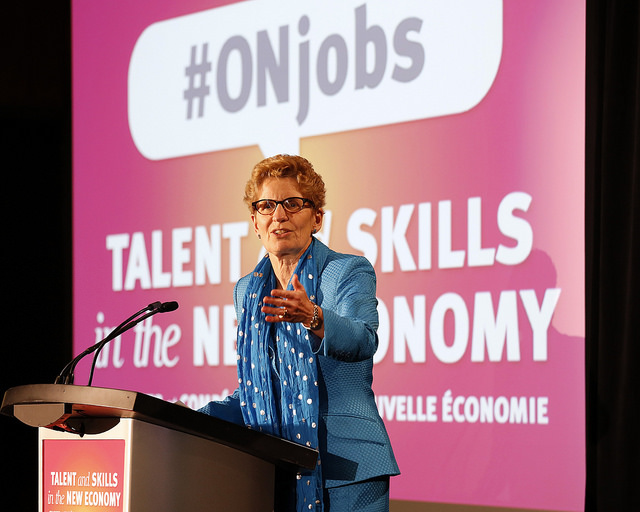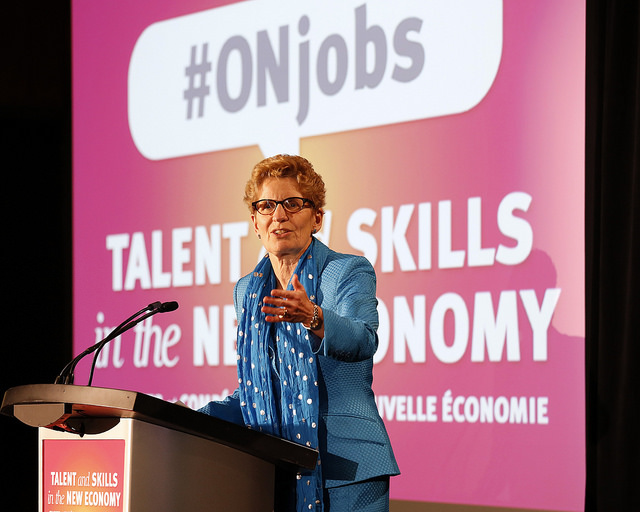
Premier Wynne delivers a keynote address to a group of stakeholders at the Talent and Skills in the New Economy Summit. Photo: Queen’s Printer for Ontario, 2014
The government of Ontario is investing $750,000 in George Brown College (GBC) through the Youth Skills Connections Program, as announced by premier Kathleen Wynne during the Talent and Skills in the New Economy summit last month.
The new funding will enable GBC to partner with business and labour to deliver a specialized program that will prepare young people for jobs in the food, metal manufacturing and information communications technology sectors.
The program will focus on two industry sectors where projections of an increasing skills gap have been identified: commercial baking and metal working. The funding is part of Ontario’s new $25 million youth skills connections fund and is leveraging the college’s applied research funding.
“All youth who complete the training will have received valuable skills training that is in demand by industry, which is anticipated to positively change their employment status,” said Daniela Cristini, community projects manager at the Ontario government’s community partnerships office.
“This program is not designed only for current George Brown College students – but graduates with an arts, science or humanities degree. All Ontario youth who meet the entry requirements established by George Brown College are eligible,” said Cristini.
This is supported by the lead applicant’s demonstration of a skills gap or mis-match using labour market evidence and the development of a strong industry focused consortia, Cristini explains. The consortia supports the training intervention, provides work placements, job opportunities and contributes to the programs requirement of a 50/50 matching contribution.
“Each project supported by the youth skills connections program is unique to the population, region and sector it is targeting – a reflection of the program’s open call for proposals”, Cristini said.
In other words, if a project has a specific vulnerable population focus, such as newcomer youth, the applicant would be identifying specific barriers the population might face and develop its training intervention, sector focus, project partners and participant supports to ensure successful completion. Some examples of participant supports might be: basic job literacy or academic upgrading; transportation costs; counselling.
“We are grateful for this investment by the Ontario government. The skills mismatch is a barrier that is especially challenging for youth in high needs communities in Ontario, said Laura Jo Gunter, senior vice-president, academic at GBC. “Those who have been traditionally absent from the labour market will receive the employment skills and supports they need to succeed.”
The program will leverage community and employer partnerships to provide training for individuals including young women, persons with disabilities, aboriginals, newcomers and visible minorities. Participants will be provided with multiple educational and workplace supports including career coaching, mentoring, employability training and on-the-job placement and applied research opportunities.
“Qualified students will be able to apply to applied research postings and those that meet the criteria will be interviewed for the positions. The Industry Specific Employment Training (ISET) project will actively seek the participation of marginalized groups”, said Joyann Callender, manager media relations at GBC. “Forty-six participants will be accepted into the program each year.”


